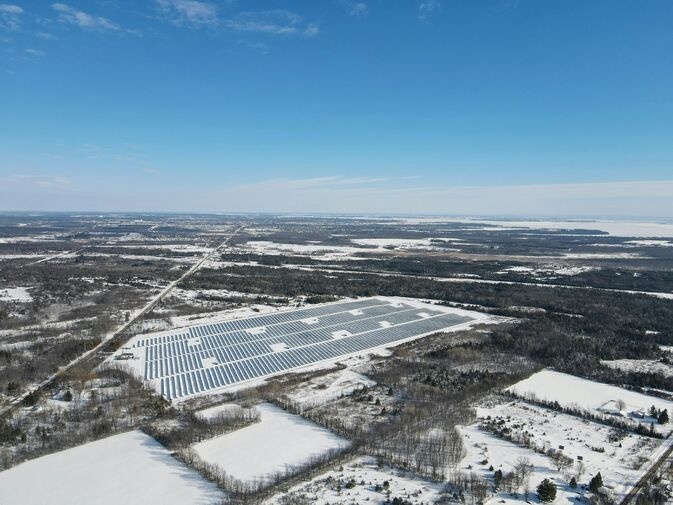


If you are scanning the Canadian market for compelling investment themes in 2025, several sectors stand out as having tailwinds from policy, technology, and market repositioning. In this piece, we highlight five sectors that merit close attention and suggest how leveraging a platform like Avantis can help sharpen your research and decision-making.
Climate transition is no longer abstract: it is already reshaping capital allocation across Canada. From renewable power, energy storage, carbon capture, to grid modernization, companies in this space are poised to benefit from government incentives and private capital flows. Canada’s Strategic Innovation Fund explicitly supports “clean technology, digital industries, and advanced manufacturing” among its priority areas. Meanwhile, major funds like Brookfield are raising multibillion-dollar platforms dedicated to energy transition globally. [Financial Times]
Within Canada, one specific opportunity is in the battery materials and critical minerals supply chains. For example, the U.S. military recently granted millions to build a cobalt refinery in Ontario to diversify supply chains, a recognition that metals like cobalt and nickel are strategic for electric vehicle and defense applications. [The Guardian] The broader upstream and downstream value chain (mining, refining, recycling) provides multiple entry points. Risks include timing of regulatory approval, cost inflation, and technological leapfrogging, but the structural drivers are strong.
Canada is embarking on a renewed phase of public infrastructure investment. The federal government has signaled aggressive spending on transit, modular nuclear, ports, and defense infrastructure. One recent Reuters piece notes that investors are increasingly turning to defense and construction stocks as the government fast-tracks “nation building” projects. [Reuters]
The Canada Infrastructure Bank also plays a role by catalyzing private investment in large public projects. Especially in provinces and municipalities that need to modernize pipelines, transit lines, and broadband, construction and engineering firms could capture outsized growth. For investors, this sector offers a relatively stable base with long project cycles, inflation pass-through potential, and public backing. The challenge is to pick firms with strong execution, balance sheet discipline, and experience with public tenders.
Canada has always been a hub of AI and deep learning research, with institutions in Montreal, Toronto, and Edmonton often pioneering foundational breakthroughs. What matters now is commercial adoption. Reports show that while adoption is still modest, it has doubled over the past year, rising from about 6 percent to 12 percent of firms integrating AI solutions. That momentum suggests we are in an early innings of diffusion. Technology broadly, including software, cloud infrastructure, cybersecurity, and data analytics also stands to gain, both from domestic demand and international export potential. A Yahoo Finance Canada article recently picked tech as one of the “hottest sectors for Canadian investors in 2025.” [Yahoo Finance]
The risks here lie in valuation bubbles, regulatory scrutiny (especially over data privacy or competition), and potential talent scarcity. Still, for investors who can identify scalable businesses early, the upside is meaningful.
An aging population, and growing demand for personalized medicine, make healthcare essentially recession-resilient. Canada’s life sciences sector is gaining support, especially around biotech, diagnostics, genomics, and cell/gene therapies. On the policy side, the federal government continues to fund innovation and biomanufacturing in Canada. Public and private collaboration is intensifying. For example, the Strategic Innovation Fund has funded projects in biomanufacturing and advanced therapeutics.
However, regulatory cycles, long development timelines, and binary outcomes (e.g. trial results) add risk. Still, for investors willing to stretch timeline and diversify within the sector, it offers asymmetrical reward potential.
Canada remains richly endowed with natural resources. But in 2025, what makes this sector exciting is the shift to “critical minerals” those metals required for renewable energy, batteries, defense technologies, and advanced electronics (like cobalt, lithium, rare earths). As mentioned earlier, the U.S. defense grant for a cobalt refinery in Ontario underscores the strategic urgency. [The Guardian] Investors are watching mining and processing firms that can align with ESG standards, decarbonize their operations, and secure permitting. Mining companies historically face regulatory, environmental, and commodity cycle risks, so diligence is key. Also appealing in this sector is the leverage to commodity cycles, when demand is strong, profits can swing quickly. Infrastructure, capital intensity, and geopolitical risk are parts of the package.
When selecting among these sectors, consider:
That is where leveraging a powerful intelligence platform becomes a differentiator. Avantis is an AI-powered market intelligence solution built for professionals in investment, finance, regulatory, and research roles. The platform can parse SEC and SEDAR filings, surface corporate disclosures, track regulatory changes, flag anomalies, and support competitive analysis. By using Avantis, investors can monitor firms in these sectors more effectively: identifying early signals, quantifying risk, screening for quality execution, and staying ahead of emerging trends. In short, an AI tool like Avantis can help you turn sector conviction into action with greater confidence.
Disclaimer: This content is for informational purposes only and does not constitute investment advice or a recommendation to buy or sell any securities. Please consult a licensed or accredited financial adviser before making any investment decisions.

Ready to optimize your market research process?
Contact Avantis today for a personalized overview and free trial.
